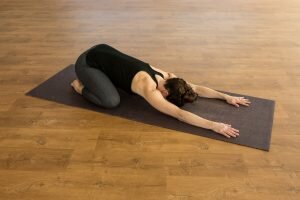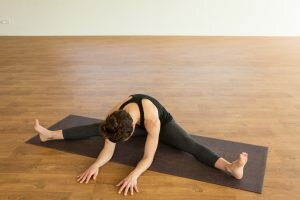The greens of summer have given way to a brilliance of red, orange, and gold. The energy of this season marks the end of one phase of growth and regeneration, and moves into the phase of harvesting, storing, and preparing for the colder months ahead. In the practical lessons nature has to teach us, we witness the dwindling light of each passing day, cooler temperatures, and drier air. The ascendancy of Yin consuming the fiery Yang of summer is palpable. The trees shed their leaves, drawing their energy inward. We too, innately shift from the external, expansive yang quality of spring and summer, and ease into an internal, reflective state of being.
In Five Element Theory of Chinese Medicine, autumn is the season of the element Metal. Metal qualities are associated with the way energy condenses, moves downward, and slows to stillness. This is a period where we may crave more sleep and gravitate toward warm and nourishing foods, and pay more attention to our inner landscape.
Metal in the organ system is represented by the Lungs and Large Intestine. In the physical sense, these organs work concurrently in receiving and releasing. If Lung/Metal energy is weak, it can be difficult to let go and navigate the inevitable transience of life, which then produces prolonged melancholy and sadness.
The relationship between the Chinese Elements is one way to promote balance within the changing dynamics of seasonal change, bringing harmony and flow to life. Yin Yoga is a system that can enhance the energy body, moving us toward a more balanced state. The following sequence involves all planes of movement, including postures that target the Lung and Large Intestine meridians (inner and outer lines of the arms), to promote seasonal balance and overall harmony. Take some time to practice this sequence in its entirety, or select a few postures to complement your other activities.
How To Practice:
There are four main principles of Yin Yoga. First, we come into a shape and go to the first point of resistance, and from that mild “edge” of sensation, observe what is being felt. Sensation should be no more than a mild, dull ache, and not gravitate toward anything sharp, stabbing or burning.
The second principle is to remain still. With the muscles relatively relaxed, the stress will transfer to the denser connective tissues. Keep in mind, you are not fixed in a single spot for the duration of the pose. Do be sure to change the angle of the pose to accommodate for any release, or to back away from sensation that becomes too intense.
Third, yin postures are held for longer periods of time. Postures can be held anywhere from three to even 20 minutes, but start with a time frame that makes sense for you, honoring the foregoing tenets.
Lastly, a fourth principle can be observed, and that is to release each pose with care. There will likely be a sense of fragility in the body as the tissues respond to the stress. Move slowly and mindfully as you transition.
Practice the postures sequentially as listed, allowing for 3-6 minutes in each pose. The postures that are suggested to be practiced in a series can be held for less time if needed. Be certain to honor the tenets of the practice, and release sooner or change the angle of the pose in the event pain or sharp sensation arises. Get creative with how you navigate your experience, and be sure to give yourself at least 1-2 minutes between postures to rest in a prone or supine savasana, observing the effects. Static, muscular holds and even some slow, controlled dynamic movement are also appropriate ways to transition. It is normal to feel some fragility as you exit a posture, and that sensation may stay present for a minute or two.
Photos by Cindy Giovagnoli
Disclaimer: Not all yoga poses are suitable for all persons. Always consult your health care provider and obtain full medical clearance before practicing yoga or any other exercise program. The information provided in this blog is strictly for reference only and is not in any manner a substitute for medical advice or direct guidance of a qualified yoga instructor.
Tadpole. Fold the upper body over the thighs with the hips settled toward the heels. Extend the arms forward.
Tadpole – lateral flexion. From tadpole, walk the hands over to the right any amount that allows for sensation to be felt along the side body. Repeat on the left side.
Heart Melting Pose. From hands and knees, walk the hands forward, allowing the chest and head to drop to the floor, keeping the thighs vertical.
Open Wing. Lie face down, and take the right arm out to the side, in line with the shoulder, palm facing the floor. Bring the left hand under the left shoulder to roll onto the right hip, stimulating the chest and underside of the arm. Bend the knees any amount that is comfortable.
Sphinx / Seal. Place the elbows under the shoulders, keeping the legs relaxed. Head may be kept in a neutral position, fall forward, or rest on a block. From Sphinx, transition to Seal by fully extending the arms, moving the hands toward the body any amount that allows for an appropriate amount of sensation to the lumbar spine. Hands may turn in or out.
Dragon “flow”. Starting with Inside Dragon, step the left foot forward, planting the hands inside the left leg on the floor or on blocks to target the hip flexor of the back leg, and possibly the groin/inner thigh of the front leg. Hold for 2 minutes, then transition to 6(a) Wandering Dragon. Keep the legs in their original shape, and walk the hands toward the right to increase the sensation in the side body. After 1 minute, come into 6(b) Twisting Dragon by walking the hands back to center and planting the left hand on the left thigh, rotating the torso to the left, inviting a heaviness to the back leg, which may create a different line of sensation along the right thigh. As the left leg is gently abducted, the foot may peel off the ground, and there may be more sensation along the inner line of the left leg. Right hand or forearm is on the floor or a block. Hold for 1-2 minutes. (repeat other side)
Saddle. Sitting on the hips, or on a block as shown, lean the upper body back, resting the elbows on a bolster to target the front line of the body, and extend the spine. Taking the pose further back will work for some bodies, either with a prop (as shown) or without a prop. Play with taking the thighs wider, and be sure to avoid this pose if any pain is felt in the knees.
Square. Cross the ankle over the knee and sit upright or fold forward, depending on what you experience in the outer hips. If ankle to knee is inaccessible, cross the shins and fold forward.
Dragonfly. From a seated position, take the legs apart, only to the point where first resistance is experienced. Place the hands in front of you and fold forward. Sensation may be felt along the inner lines of the legs or along the back line of the body.
Twisted Root. Lie on your back, with the knees bent, feet on the floor. Cross the left thigh over the right and drop the knees to the right. Experiment with the angle of the knees in relation to the hips, and play with the positioning of the arms. If there is pain in the knees, unwrap the legs, and simply stack the thighs, inviting the spinal twist.



















